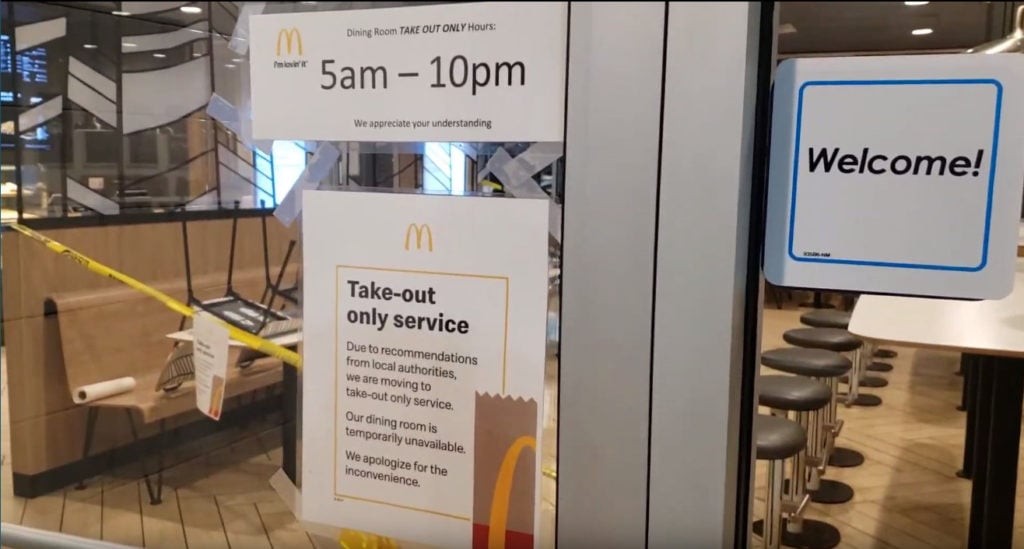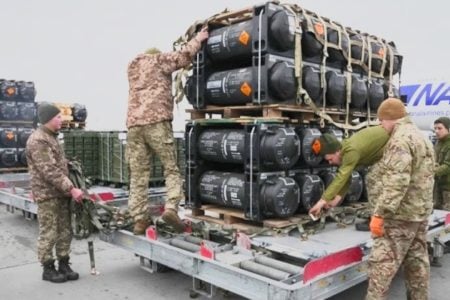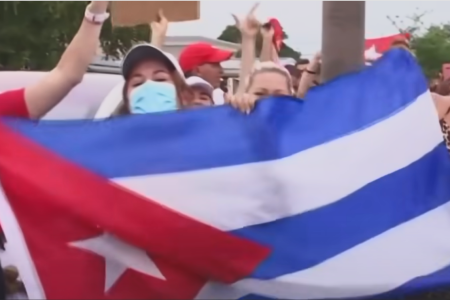
Establishing a “social distance” is one of the Western governments’ top priorities in the fight against Wuhan pneumonia.
In the US, since March 16, President Donald Trump has called on people to take measures to create a “social distance.”
US President Donald Trump on March 16 called on Americans to stop most social activities for 15 days and not gather a group of more than 10 people to curb the rise of Wuhan pneumonia cases in the country.
Mr. Trump also emphasized that people should avoid arbitrarily moving, not going to bars, restaurants, public food stalls or gyms, etc.
What President Trump advises people is considered measures to create “social distance” to minimize the possible close contact between people to prevent the disease spreading.
There is no word on how long the social distance must be maintained in the US, but recent signs from the US authorities suggest that this measure will be implemented in the long run.
The CDC said on March 15 that people should stop gathering with more than 50 people in the next 8 weeks.
On March 16, some states also ordered millions of students not to attend school for the rest of the school year. During a press conference on March 16, President Trump said that this outbreak could last until June, even August this year.
In the UK, government advisers say that maintaining a social distance will need to be implemented for “at least half a year” to prevent overworks in the intensive care units.

The Scientific Advisory Group on Emergencies (Sage) recommends the alternating application of tighter and looser measures over a period of nearly a year.
Strict measures include closing schools and maintaining a social distance from everyone.
Looser measures include isolation of individual cases and families.
The decision came after Prime Minister Boris Johnson said on Thursday that Britain could “win” in the battle with the Covid-19 epidemic within 12 weeks.
Schools in England, Scotland and Wales are closed from Friday March 20 until further notice, but are still open to vulnerable children and children of those identified as essential workers for society.
UK cafes, pubs and restaurants are required to close.
Nightclubs, theaters, cinemas, fitness facilities and sports centers must also be closed “as soon as possible“.
These are steps in ways to maintain social distance in the UK. People are required to avoid close contact with others, if not necessary.
In Italy, the European nation most affected by the pandemic so far, has imposed a national blockade, restricting people from traveling except for necessary reasons, jobs and health from March 9.
The government has called for citizens to stand at least a meter away from each other. The activities, or nocturnal habits of this Southern European national society were canceled. Images of Italians lined up one to two meters apart, even farther away, to keep the space in the grocery store from crowding, and prevent them from becoming infected.
The act of hand-in-hand with friends, hugging neighbors or rubbing the heads of the children who used to express the culture of the Italian people has been minimized by the people.
Speaking to international media, Piero Emilio Vincenzi, owner of an furniture store near the Vatican, said: “I find it very disciplined, united and cooperative (with distance rules), and everyone understand that, if there is an infected person, there will be many people who are infected as well.”
In France, on the evening of March 16, President Emmanuel Macron declared that France was fighting against the disease of Wuhan pneumonia and announced more stringent measures to minimize the people’s free movement nationwide within the next 15 days, from noon of March 17.
Accordingly, throughout the French territory on the continent as well as overseas, people are only allowed to go out for the purpose of treating illnesses, buying necessities but maintaining a distance of at least 1m, to work because they can not work at home, go to the gym but alone. People must not take excuses for walking, then meet in the street or in public places, visit family or gather in the house, minimize contact and infection.

From noon of March 17, any person on the road must prove the purpose of moving to buy necessities, go to work because they have not been arranged to work at home, go to medical treatment, go to urgent family work or help those in danger.
Interior Minister Christophe Castaner said that France is not completely shut down. There are still exceptions to getting out of the house, going to work and dealing with the work you need, not going out, gathering. Therefore, the order was made very clear: if not forced to go out, stay at home.
More than 100,000 police and soldiers will be deployed across the country, controlling the people in taking measures recently announced by the President. Mobile and stationary checkpoints will be established on highways and inter-provincial and city roads. If anyone violates, will be fined from Eur38 to Eur135, depending on the level of violations.
So far, the French government is also considering extending the time to maintain the curfew in this country.
So why is the measure of “maintaining social distance” effective in preventing disease spread? How do people create social distance?
Maintaining contact distance is important, because the disease is spread when an infected person coughs, causing tiny droplets of saliva which are containing viruses. These particles can be inhaled by others, or spread the infection by touching the surface on which the particles fall, then rubbing your hands into your eyes, nose or mouth.
The shorter time we are close each other, the less likely we are to be infected with the virus.
People are now required to follow self-sustaining measures, especially for people over 70 years of age, pregnant women and people in the group who are often vaccinated against the flu.
To create social distance, people should work from home (if possible); avoid traveling if not necessary; avoid crowded places such as clubs, theaters, and event venues; avoid gathering with friends, family and relatives.
However, people can still go for a walk or run outdoors; go to buy necessities as long as there are no signs of infection and always make sure to keep a distance of 1-2m from others.
If there are signs of infection, self-isolation should be done at home for at least 14 days.
The time to maintain social distance will depend on many factors. But it will certainly continue for a long time when the current pandemic situation in Europe is very tense with the number of infected people and deaths due to increasing disease.
How long does it take to maintain the “social distance” to “stop” the Wuhan pneumonia disease is a question that people of many countries are concerned about in the context that the pandemic has affected more 160 countries and territories. However, this is a particularly difficult question even for the scientific world.
Responding to international media on March 15, Natalie Dean, a biologist at the University of Florida, is working on a project to evaluate the Wuhan pneumonia vaccination project with the World Health Organization (WHO) and other disease response projects indicate: “I do not know how long people who are willing to ‘socialize’ can continue to do so now. But when you see the situation in hospitals getting harder and harder, I think that attitude will change.”
She added: “It is extremely stressful. It will force many families to change their living habits. But honestly, it’s still too early to give an answer on how long this will take. It’s like you ask the firefighter when you can return home while your apartment is still on fire.”
Never has the distance between people been recommended so far. The rush of greetings to each other with hugs, kisses, everyday handshakes of Western culture, or the scene of crowds sitting close together in community events has disappeared abruptly and decisively.
The Wuhan pneumonia pandemic not only disturbs everyday life but also creates social distance between people. If the epidemic was prevented, would the French ‘bisous‘ cheek culture, the Philippines ‘Mano‘ gesture, the kind of eskimo-esque kissing meant that the salutator would put his nose and lips on the other’s cheek Greenland’s inhalation or “hongi” culture touching both nose and forehead when greeting at Maori and many traditional ways of greeting the regions of the world still be maintained?
Hoang Trung from Hanoi – Thoibao.de (Translated)



























